Abstract
Self-recording procedures were used by four adolescent girls to increase work and comments (cues) that evoked staff praise during vocational training sessions in a maximum-security institution for offenders. The girls were selected on the basis of their not responding to a staff-directed token program. The self-recording procedures were directed by a therapist who saw the girls outside the vocational training sessions. According to a multiple-baseline design, self-recording of work was introduced sequentially to each of the two or three settings the girls attended each day. A few days after work had increased, self-recording of cues was introduced. Tokens were delivered by the therapist for work and cues recorded by the girls. Work and cues increased following self-recording for three of the girls and increased cues evoked higher rates of staff praise. Girl and staff behaviors were maintained during short follow-up periods when tokens were not given for the girls' records. The procedures failed to effect desirable changes with a fourth girl's work and self-recording of work was terminated without introducing cueing.
Full text
PDF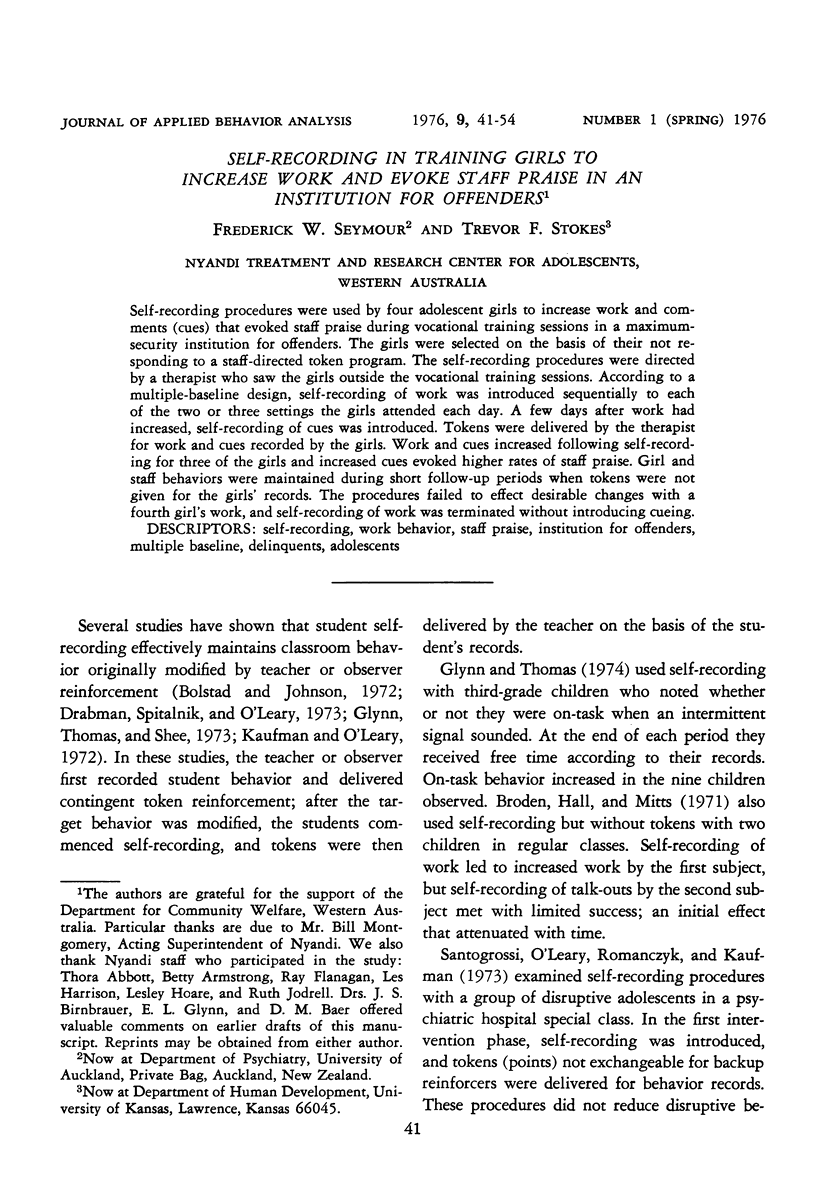
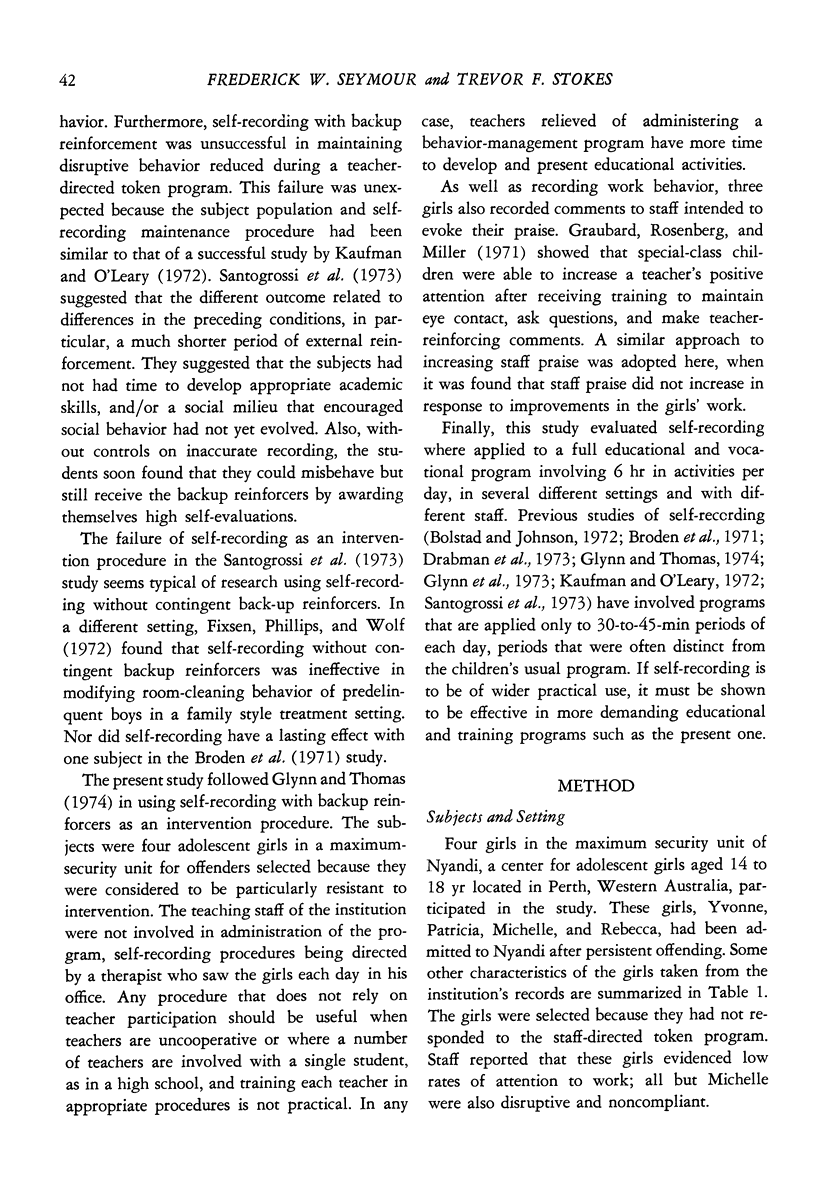
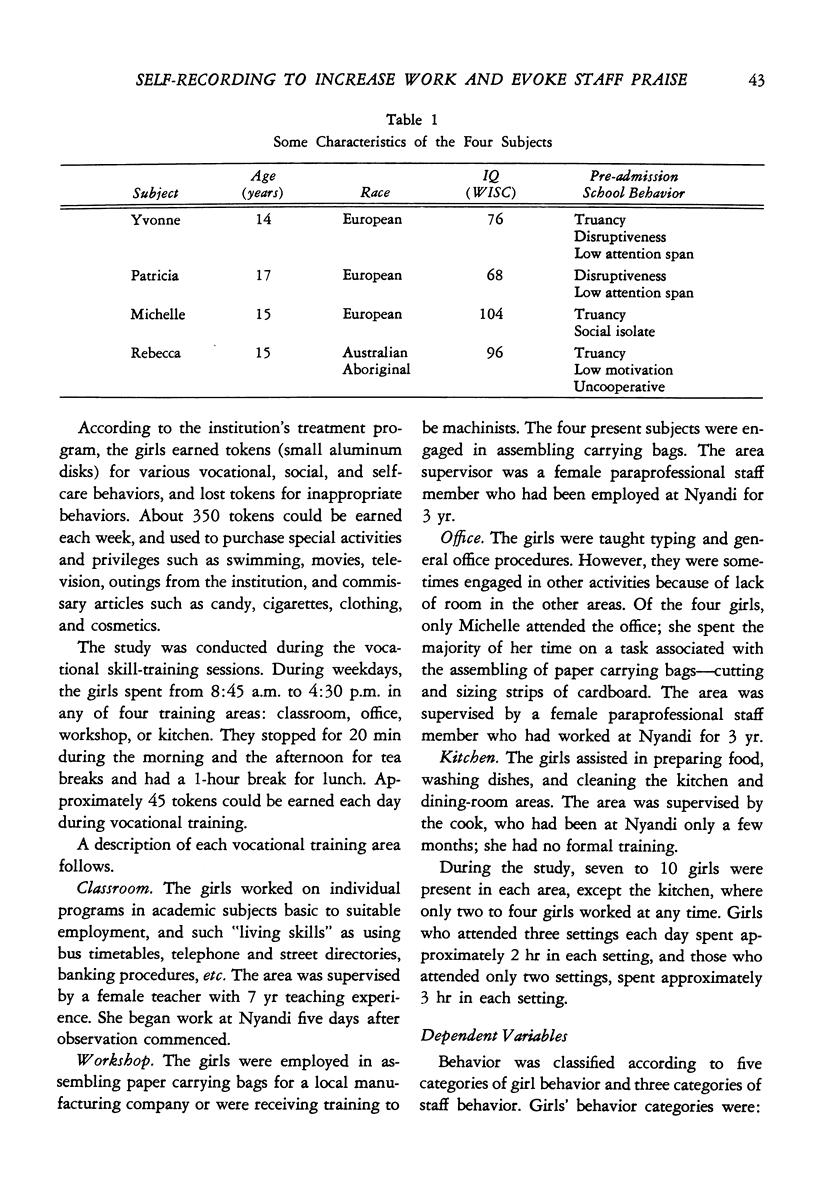
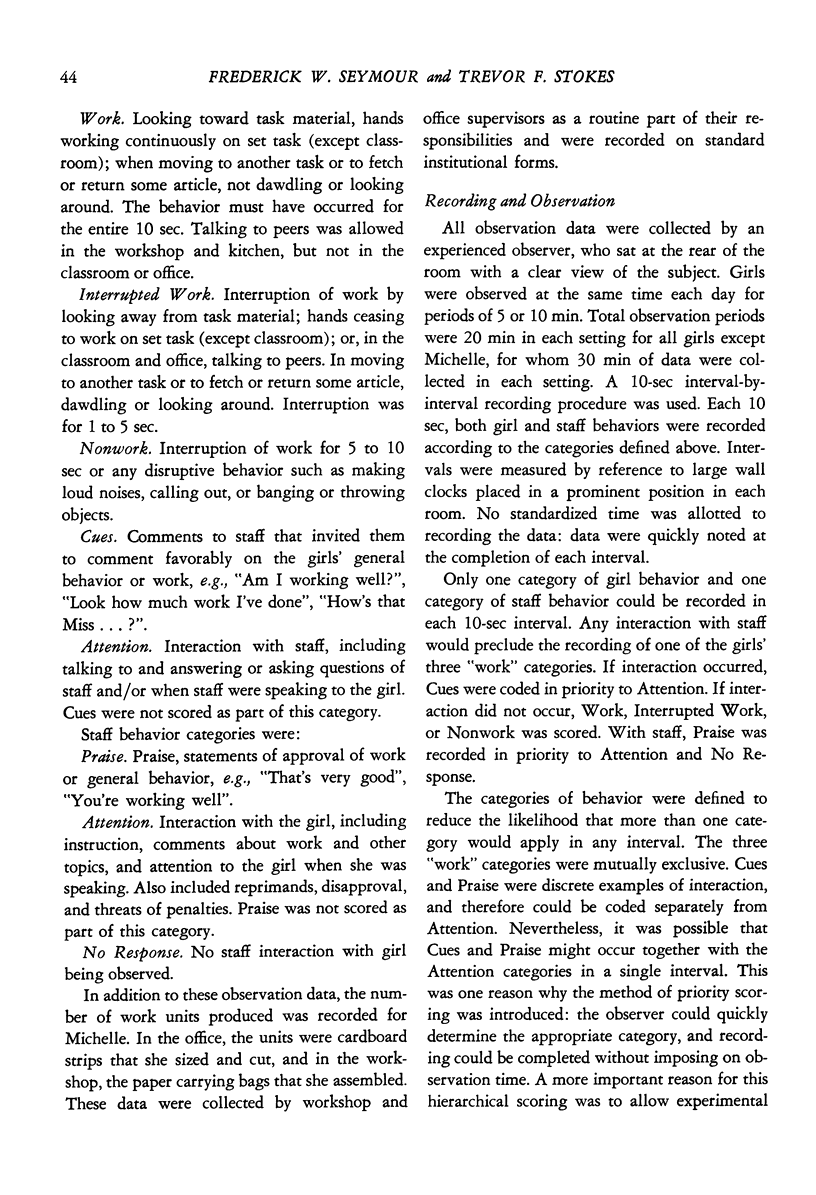
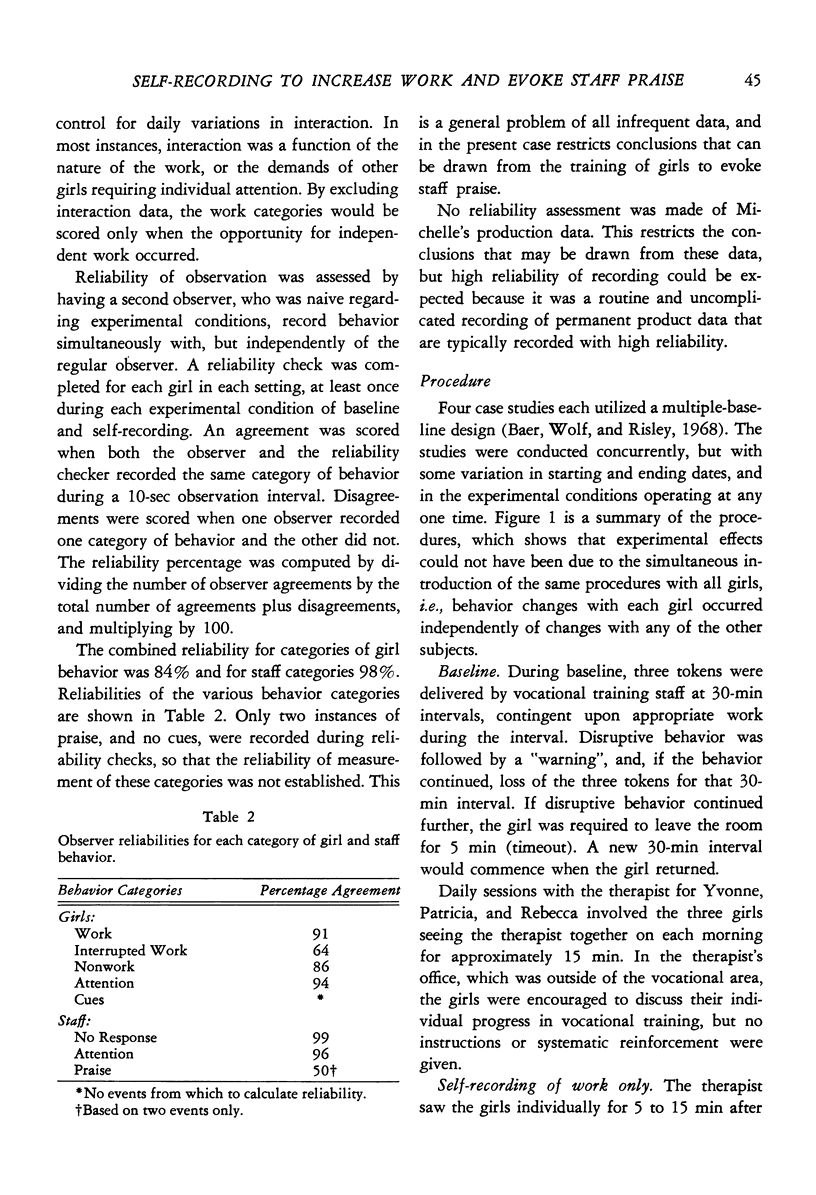
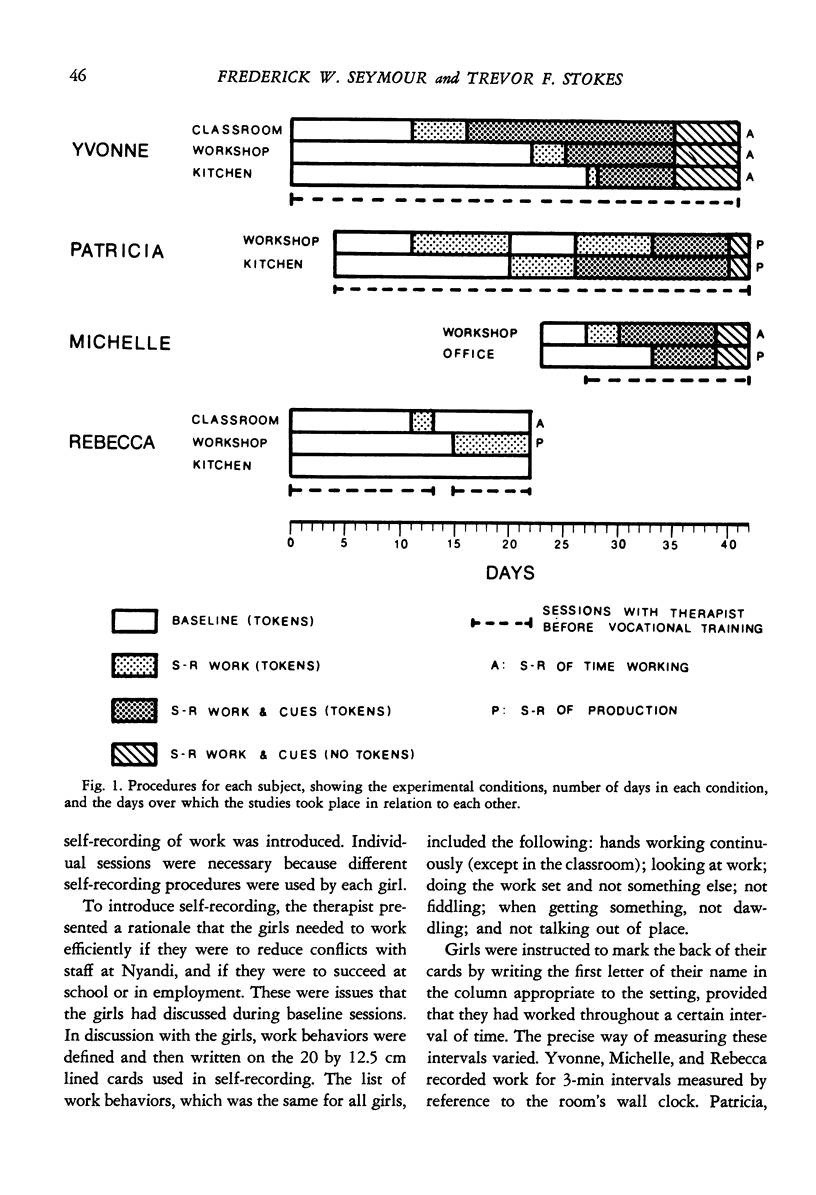
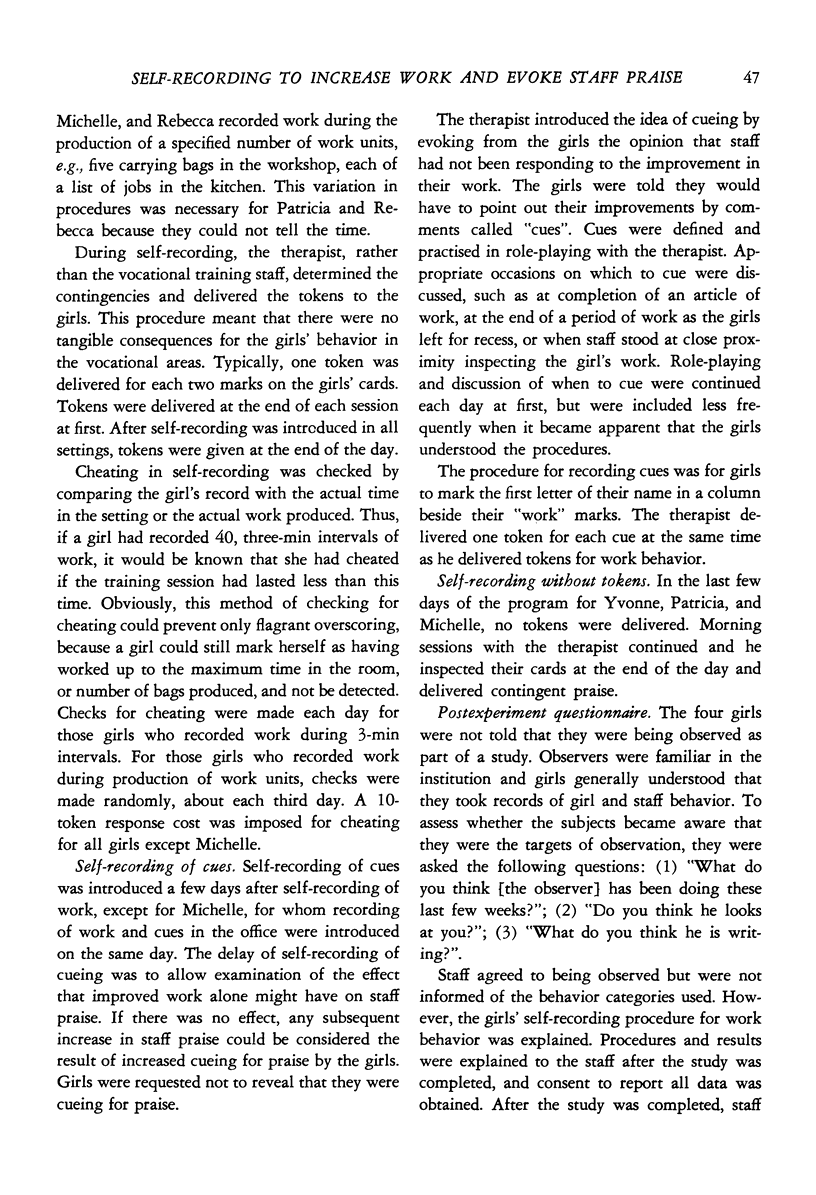
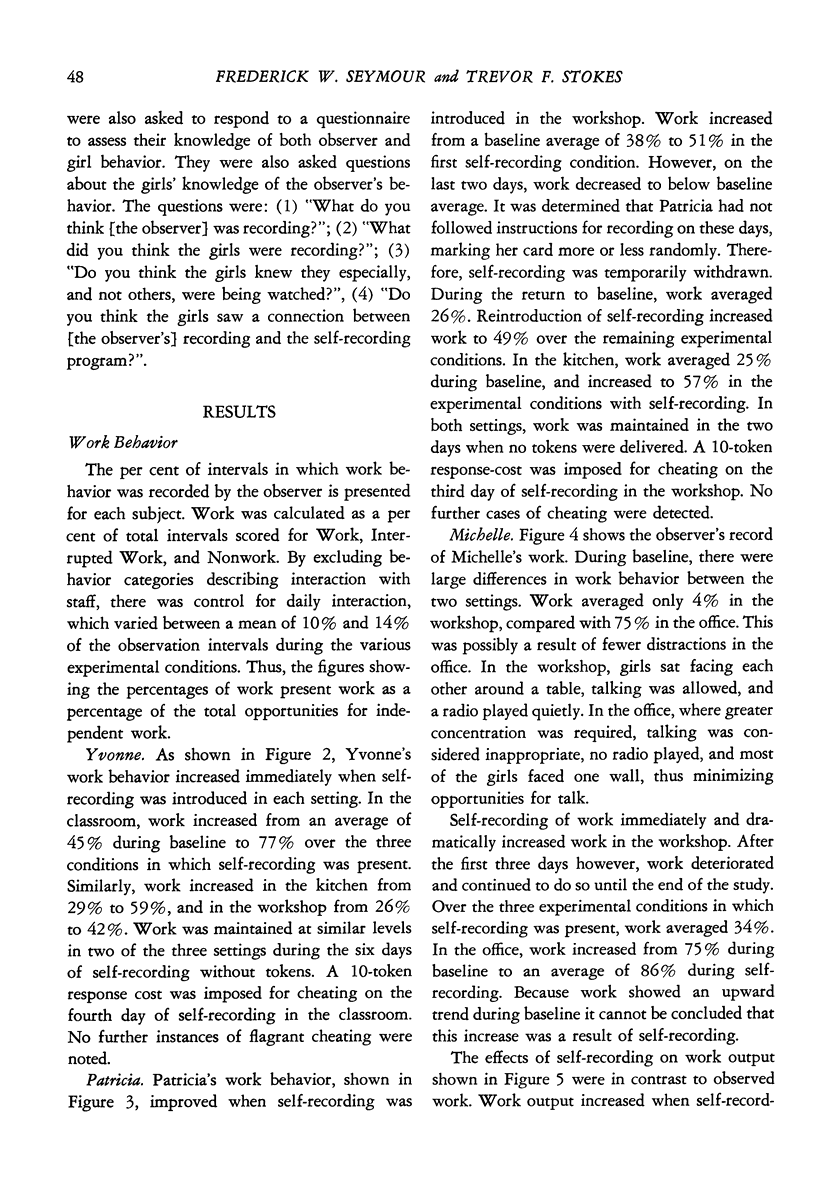
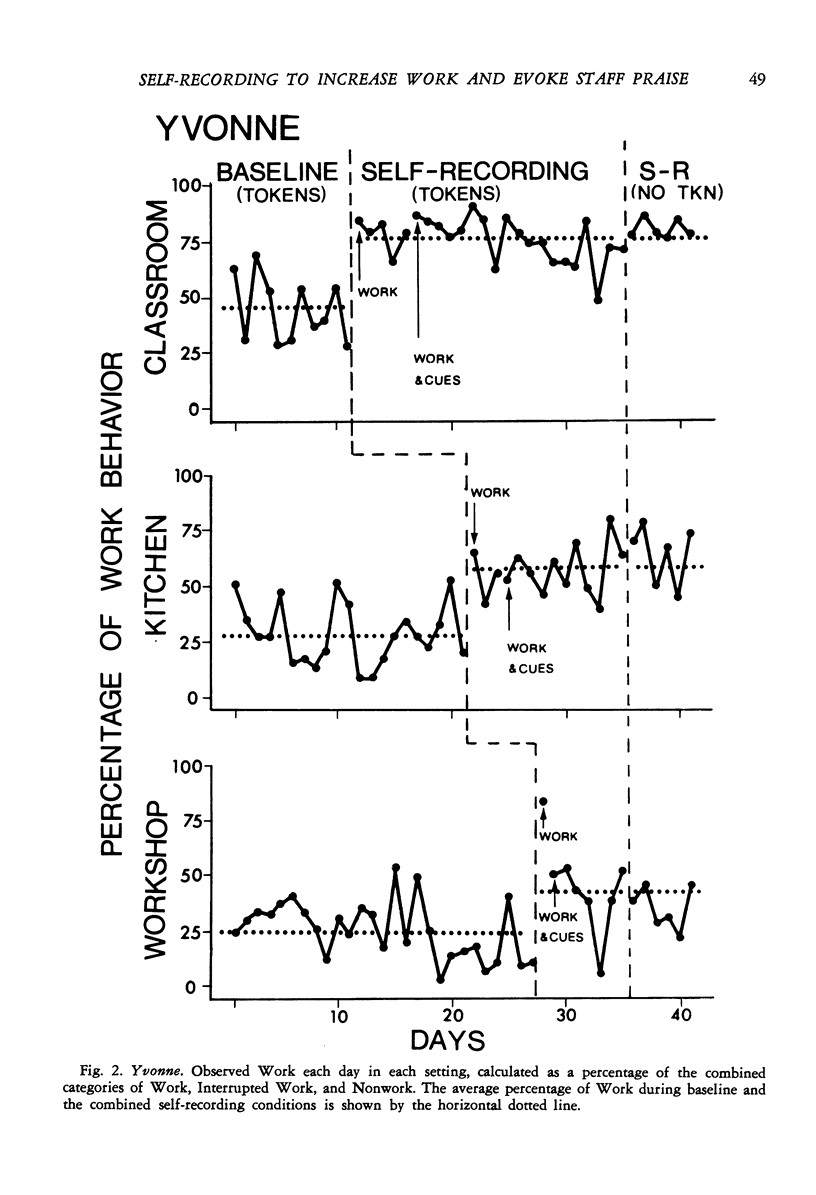
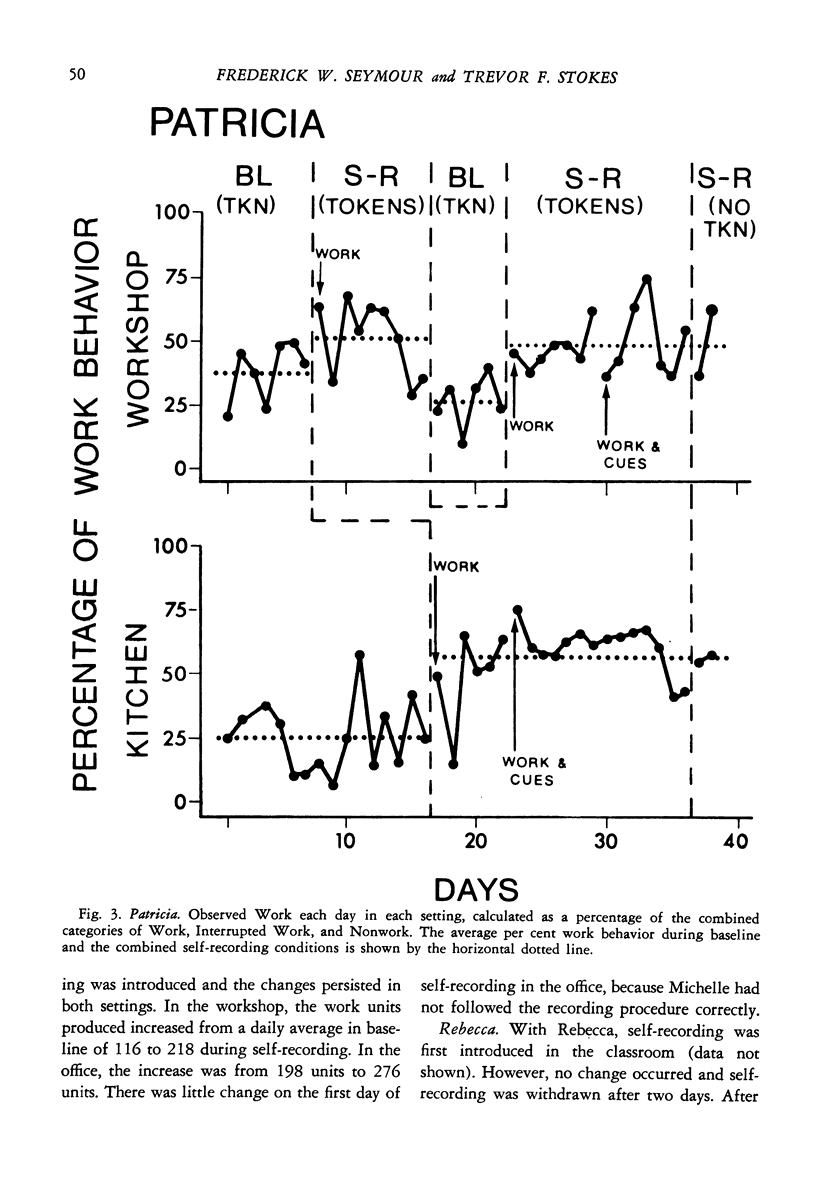
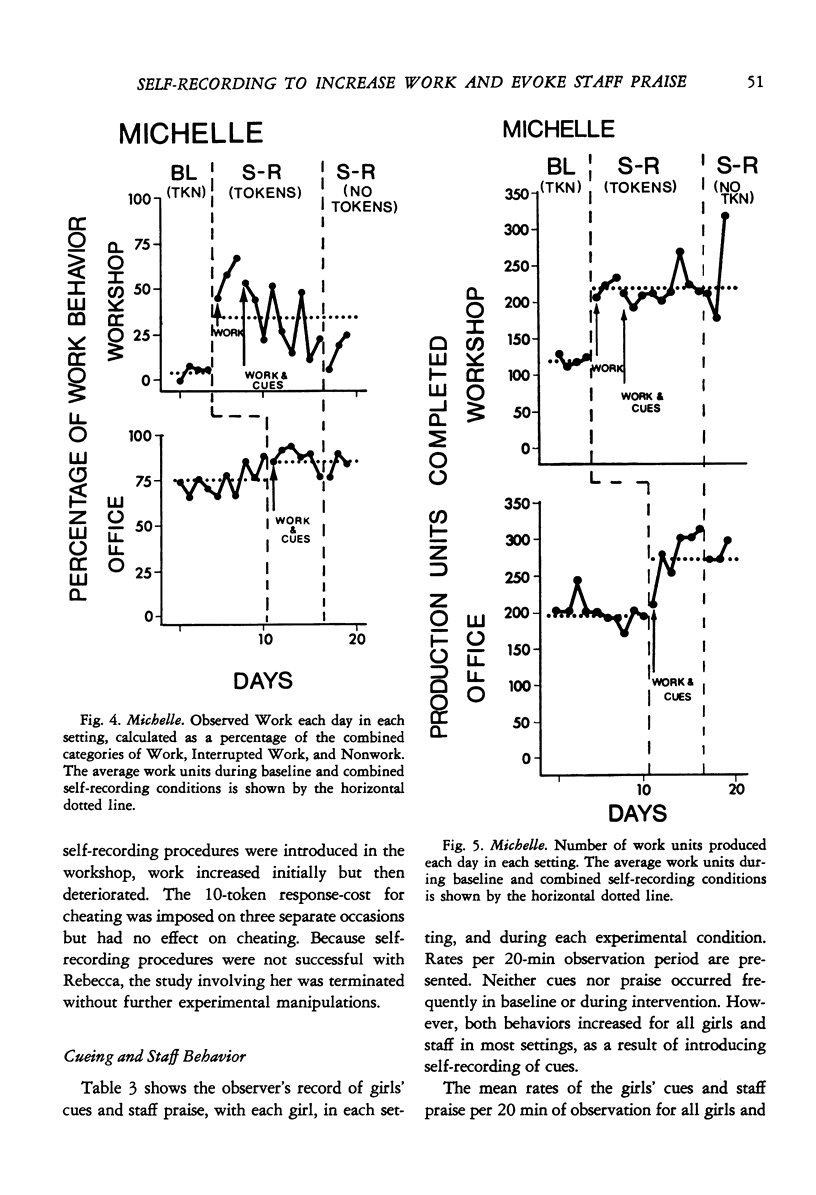
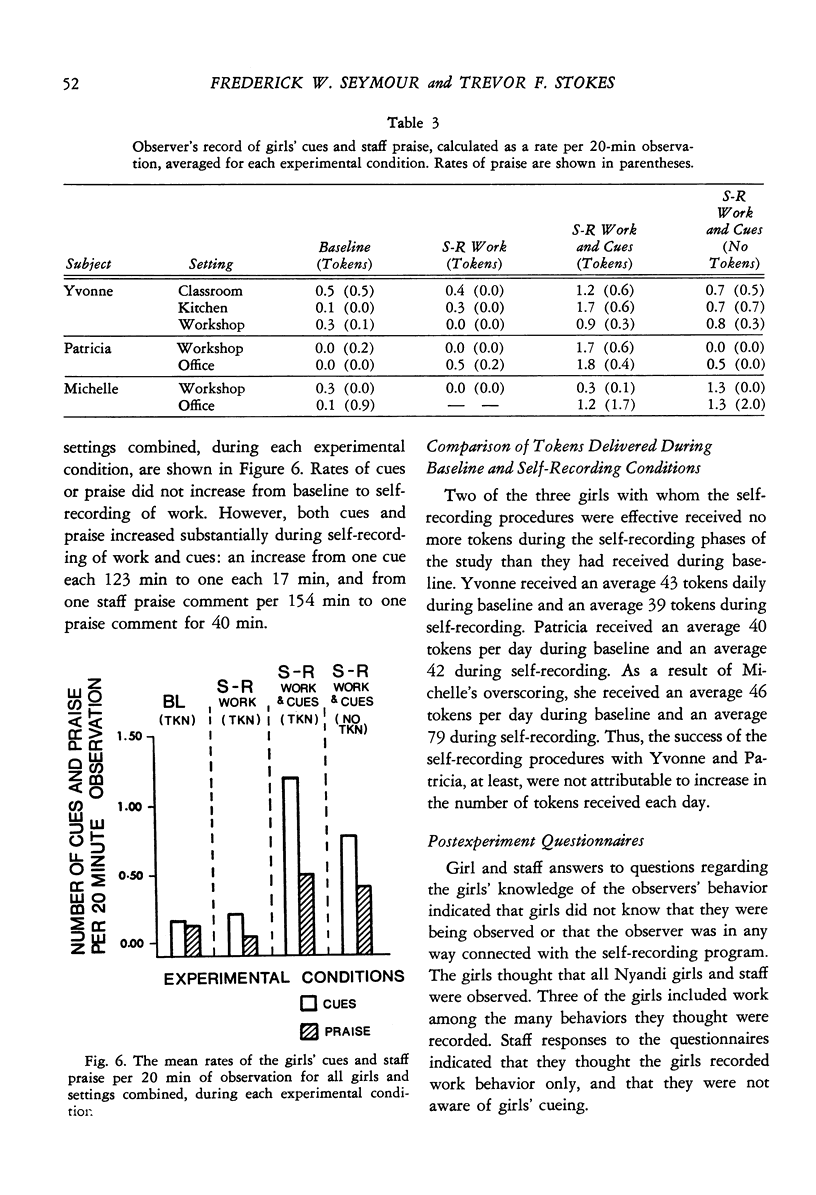
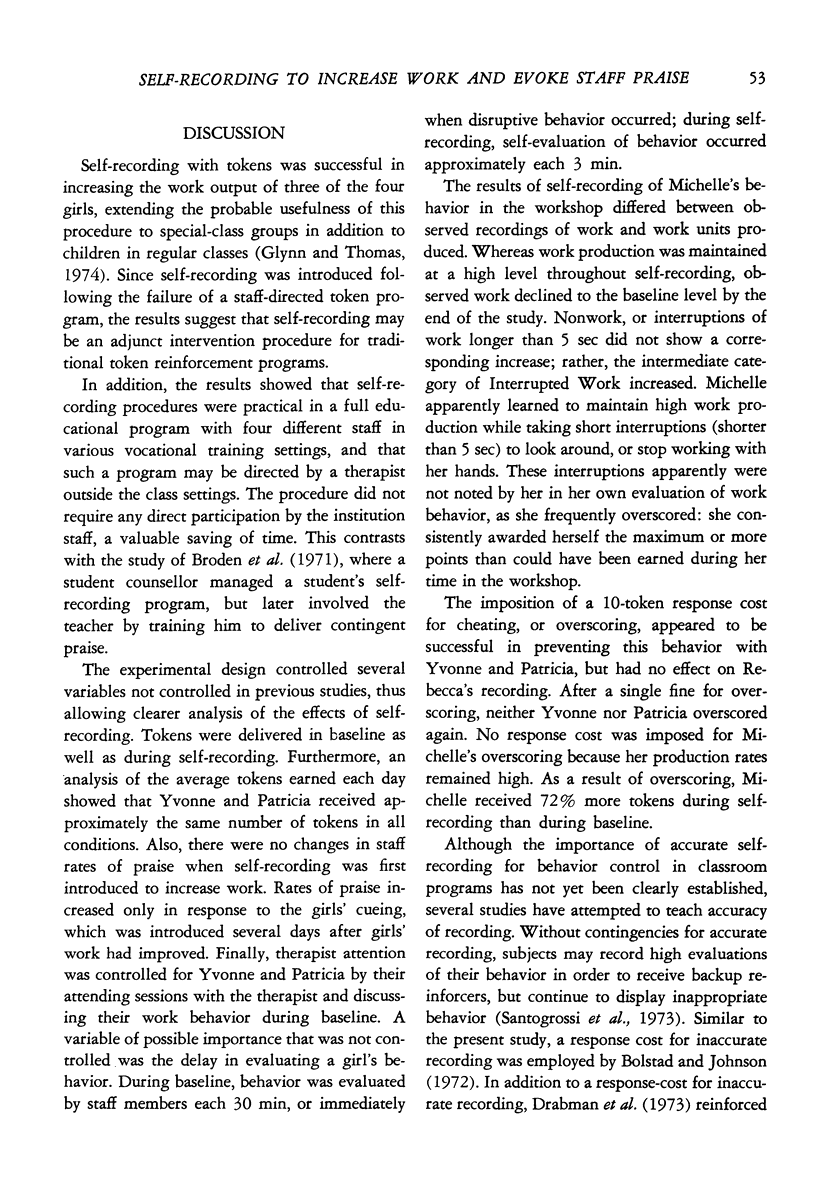
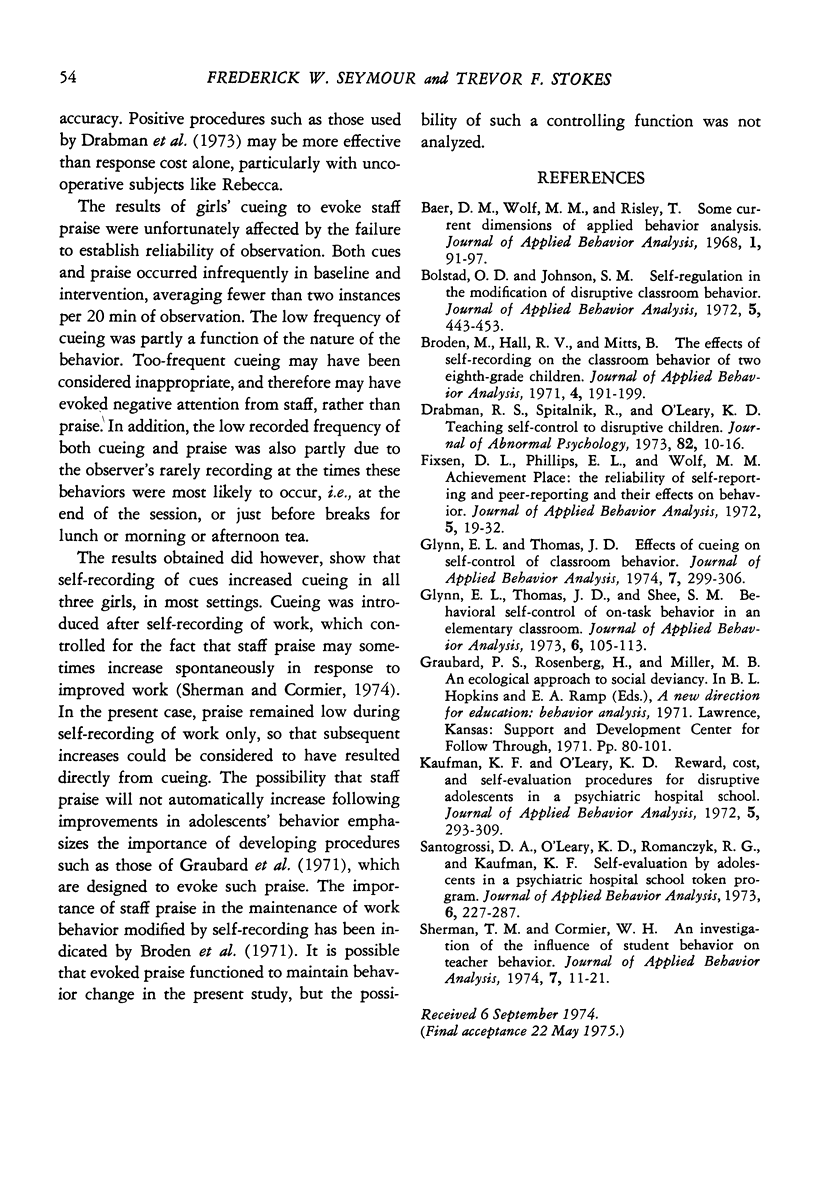
Selected References
These references are in PubMed. This may not be the complete list of references from this article.
- Baer D. M., Wolf M. M., Risley T. R. Some current dimensions of applied behavior analysis. J Appl Behav Anal. 1968 Spring;1(1):91–97. doi: 10.1901/jaba.1968.1-91. [DOI] [PMC free article] [PubMed] [Google Scholar]
- Bolstad O. D., Johnson S. M. Self-regulation in the modification of disruptive classroom behavior. J Appl Behav Anal. 1972 Winter;5(4):443–454. doi: 10.1901/jaba.1972.5-443. [DOI] [PMC free article] [PubMed] [Google Scholar]
- Drabman R. S., Spitalnik R., O'Leary K. D. Teaching self-control to disruptive children. J Abnorm Psychol. 1973 Aug;82(1):10–16. doi: 10.1037/h0034981. [DOI] [PubMed] [Google Scholar]
- Fixsen D. L., Phillips E. L., Wolf M. M. Achievement Place: the reliability of self-reporting and peer-reporting and their effects on behavior. J Appl Behav Anal. 1972 Spring;5(1):19–30. doi: 10.1901/jaba.1972.5-19. [DOI] [PMC free article] [PubMed] [Google Scholar]
- Glynn E. L., Thomas J. D. Effect of cueing on self-control of classroom behavior. J Appl Behav Anal. 1974 Summer;7(2):299–306. doi: 10.1901/jaba.1974.7-299. [DOI] [PMC free article] [PubMed] [Google Scholar]
- Glynn E. L., Thomas J. D., Shee S. M. Behavioral self-control of on-task behavior in an elementary classroom. J Appl Behav Anal. 1973 Spring;6(1):105–113. doi: 10.1901/jaba.1973.6-105. [DOI] [PMC free article] [PubMed] [Google Scholar]
- Kaufman K. F., O'leary K. D. Reward, cost, and self-evaluation procedures for disruptive adolescents in a psychiatric hospital school. J Appl Behav Anal. 1972 Fall;5(3):293–309. doi: 10.1901/jaba.1972.5-293. [DOI] [PMC free article] [PubMed] [Google Scholar]
- Santogrossi D. A., O'leary K. D., Romanczyk R. G., Kaufman K. F. Self-evaluation by adolescents in a psychiatric hospital school token program. J Appl Behav Anal. 1973 Summer;6(2):277–287. doi: 10.1901/jaba.1973.6-277. [DOI] [PMC free article] [PubMed] [Google Scholar]
- Sherman T. M., Cormier W. H. An investigation of the influence of student behavior on teacher behavior. J Appl Behav Anal. 1974 Spring;7(1):11–21. doi: 10.1901/jaba.1974.7-11. [DOI] [PMC free article] [PubMed] [Google Scholar]


